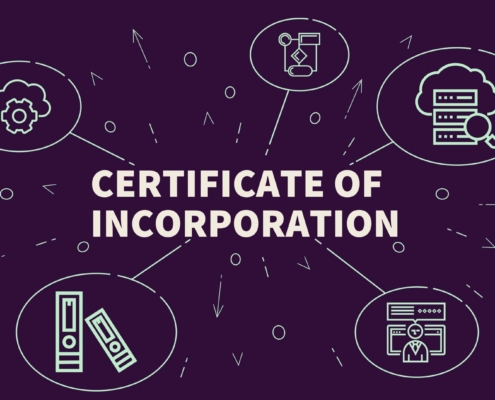Why is succession planning important?
In order to prevent important positions in a firm from being vacant for long periods of time or filled by individuals lacking the necessary training or experience, succession planning is crucial. Keeping a competitive edge and team spirit requires knowing who is next in line for senior roles. It also means being able to coach these individuals to become your company’s next generation of great leaders.
But only 21% of human resources managers indicated their company had an official plan for succession in place. Another 24% said they had an informal one, according to a SHRM survey. This indicates that there was no plan in place at more than half of the companies whose HR experts were polled.
This handbook will give you a thorough understanding of succession planning, along with best practices and an adaptable framework that can be used by any kind of organization.
The process of choosing and nurturing important talent to maintain the continuity of vital responsibilities is known as succession planning. In order for them to progress within the company and take on high-level positions, it is important to identify high performers and future leaders and to mentor and develop them.
Every day, workers retire, change firms, and are promoted. For this reason, you must have a well-thought-out plan in place to guarantee that roles are filled by qualified candidates.
Let’s examine the succession planning concept in more detail.
Succession planning involves important duties first and foremost. Not every position has bearing on succession planning. It ought to concentrate on positions that are essential to the organization’s survival and competitiveness. It’s not too hard to replace a junior sales representative. But you don’t want to have a vacant vice president of sales position for very long, if at all.
The second priority is to identify and nurture important talent. This implies that the best and most talented people are chosen and developed for those important roles. Succession planning typically involves internal candidates. For instance, the vice president of sales develops into the next CEO, while the director of sales is groomed to take on the VP of sales position. On occasion, external applicants are hired and trained prior to assuming a new post; however, this occurs more ad hoc. It becomes cheaper to cultivate and promote inside a company as it expands.
The last aspect of the definition is to guarantee continuity. Making sure that someone else is prepared and capable of taking over that function and getting things rolling quickly in their absence is the ultimate goal of putting in all of this work.
For many different reasons, succession planning is critical to an organization’s success:
- In the event of an unexpected departure, a succession plan guarantees business continuity while lowering risk and interruption. Lindsay Dunlap, a trainer and team performance consultant, goes into further detail on the dangers of not having a succession plan. A lot of organizations don’t give new leaders enough time to get “up to speed,” so they’re forced to learn on the job. Emerging leaders are left feeling anxious and afraid to seek assistance because they are expected to live up to standards and norms that they might not completely comprehend. According to Dunlap, this causes a rise in turnover in crucial positions for businesses.
- When someone in a crucial position leaves, important knowledge and experience might be shared rather than lost.
- High-potential and high-achieving staff members have a clear career path inside your company thanks to succession planning.
- Based on many circumstances, it aids in future planning and preparation. This gives stockholders peace of mind that the company will be well-managed in the long run. Uncertainty and unfamiliarity pose a risk to an organization’s stakeholders’ and investors’ confidence if a succession pipeline is not successfully planned or established, says Jenna Fisher, managing director of Russell Reynolds Associates, an executive search and leadership advisory firm.
- You’ll increase engagement, develop your current workforce, and save money on recruiting executives and senior staff from outside sources.
- A succession plan offers a methodical strategy for training the next wave of executives who will lead your company into the future.
- Within the organization, power battles could occur in the absence of a clear succession plan. Various individuals and organizations may begin to vie for supremacy. The accomplishment of corporate objectives is hampered by this dysfunctional conflict.
In sum, succession planning helps you to develop both your business and your workforce.
Model of succession planning
Let’s examine the structure of a succession planning model.
Groves (2005) presented an approach that combined succession planning with leadership development. Leadership talent is discovered, recognized, actively nurtured in leadership programs, and groomed for succession. Talent is cultivated. To make this model more useful for succession planning, we made certain adjustments. In the section that follows, we will go over each phase of this succession planning model in depth. We’ll also explore the prerequisites needed for successful succession planning.
Framework for succession planning
How can we create and put into place a workable procedure that makes succession planning easier? A succession planning framework aids in ensuring the efficacy and consistency of your procedure.
Prerequisites for succession planning
There are two prerequisites to our succession planning framework:
- Fostering the formation of a leadership culture
- Choosing pivotal roles
First requirement: A leadership culture
Senior management, particularly the CEO, must demonstrate a clear commitment to succession planning and future leadership development.
Young talent development requires significant participation from senior managers and executives at the highest levels. Senior leaders might, for instance, mentor newcomers and assist them in acquiring leadership skills.
Furthermore, it is recommended that executive performance appraisal and reward systems integrate leadership development initiatives, such as identifying and nurturing high-potential personnel.
Prerequisite 2: Choosing essential positions
Important roles are those that, if left unfilled for a few months or performed by an inadequate recruit, would do serious harm to the organization, as we’ve already discussed. A CEO would surely be such a post. However, a global survey revealed that only 53% of businesses had a plan in place for the CEO succession.
The simplest method to determine these positions is by looking at the highest earners or the most senior members of the organization’s hierarchy. This choice will be pretty accurate if the company has a clear job architecture with role descriptions and awards based on duties.
An alternative that might be used in the absence of a well-defined task architecture is to require functions to be ranked according to significance. A CEO, for instance, has greater significance than a CFO. It’s common knowledge that the CFO is more significant than the CTO. In this manner, you may pinpoint the most important roles in your company.
It is recommended practice when it comes to leadership jobs to focus on the upper 0.5% of the company and avoid having too many roles. Maintaining your leadership succession bench strength may be more difficult if you choose too many key jobs. This is because it takes a group of bench members to replace a single senior executive.
Four stages of succession planning
Once these two prerequisites are satisfied, you can start the succession planning process. The succession planning model we covered earlier serves as the foundation for the four-step procedure. The following are the main steps in the process:
- Talent development
- Discovery of leadership ability
- Development of leadership
- Decision on succession
This process can serve as a model for your succession planning. Let’s examine each phase in further depth.
- Development of talent
Two excellent practices for developing a succession planning strategy are to take a long-term view of the process and integrate it with talent and leadership development. Why? It is because succession planning typically concentrates on senior leadership positions that would be filled by workers now holding mid-level leadership positions. Therefore, it makes sensible to combine succession planning with talent and leadership development.
The first step in the succession planning process is consistent talent development. High-potential employees participate in talent development programs offered by many firms, where they receive demanding projects, varied duties, and training. Developing leadership skills and gaining experience through job rotation and career planning are the main goals of relevant personnel management initiatives.
Developing outstanding talent through mentoring is another well-liked strategy. It’s common knowledge that workers who have mentors do better, advance more quickly, receive better pay, show greater organizational commitment, learn more on the job, and are less likely to quit. Psychosocial benefits include increasing internal exposure, coaching, acceptance, encouragement, and more difficult assignments (Groves, 2005).
- Recognizing potential for leadership
Not every participant in talent development programs will be successful, so you’ll need to keep an eye on them and give them regular feedback. People who aren’t cut out for senior leadership roles could make excellent low- or middle-management hires.
This information from programs for talent development aids in identifying potential leaders. Tools that aid in determining the strength of the managerial bench and serve as the foundation for learning initiatives include committees, coding systems, mentors, and surveys. Businesses can also employ software and tools for succession planning to identify and nurture future leaders.
Diversity is essential at this stage. If the business already struggles with diversity in the boardroom, then diversity among succession candidates ought to be a primary focus of leadership and talent development initiatives. Your prospects of creating a more diverse boardroom in the future increase with the number of qualified participants from a variety of backgrounds you bring into your programs.
- Development of leadership
Those who have been recognized as having great leadership potential are further developed at this point. This isn’t your typical talent development program. Future leaders are welcome to attend internal training and courses. It is recommended that they establish more intimate relationships with leaders inside the organization, as this will enhance their efficacy in their forthcoming positions.
Stretch assignments, which are difficult assignments meant to provide experience outside of an employee’s normal routine, 360-degree feedback to give managers developmental feedback, and coaching from executives on expertise they need to develop are other ways that this group should be exposed to active learning.
According to Jenna Fisher of Russell Reynolds Associates, having your replacement candidate(s) be actively involved with company activities that are important to the position early on, like mergers & acquisitions and managing relationships, can be crucial to their success. According to Fisher, this was the situation with Corie Barry’s well-planned elevation to the position of CEO of Best Buy in 2019, following Hubert Joly.
In the process of sponsoring and assisting a remarkable female leader, Hubert accomplished what he called one of the things he’s proudest of in his career. According to Fisher, this approach equipped Corie to quicken the company’s growth plan and be ready for the pandemic when it started.
Steps 3 and 2 of the succession planning model are shown as having a feedback loop. Enhancing leadership skills adds fresh perspective to assessing the managerial bench strength. This step’s new information will affect how leadership talent is identified.
- Choosing a successor
The preceding stages can be used to build a succession matrix. You map each function’s possible successors in this matrix.
The possibility of employees leaving the company is a crucial factor to take into account in this stage.
Since a turnover in one of these crucial roles can disrupt your succession strategy, it is imperative that you accurately analyze the turnover rate for these roles. For instance, it will be ineffective to try to replace a CEO who plans to stay in the position for the next ten years with five different persons. Similarly, even though there’s a good chance the COO will resign, having only one possible replacement is extremely dangerous and shows a lack of preparation.
Although less disruptive, turnover in the senior talent group is nevertheless quite expensive. This group is part of your succession plan and has received considerable training. This will not only cost the company more money, but it can also throw off the organization’s overall succession planning process. Thus, controlling expectations and keeping an eye on turnover are crucial actions to take into consideration at all times.
When an important employee leaves or retires, you need to decide who will take over in that position. You and the departing employee must collaborate to develop an onboarding program, if one isn’t currently in place. A program with such specific goals will make it possible for the successor to catch up as soon as possible.
Examples of succession planning
How does succession planning actually seem in the real world? Here are three succession planning examples:
First example: McCormick & Co.
McCormick & Co. successfully implemented a deliberate and thorough succession planning approach in 2008, handily handing over CEO Robert Lawless’s position to Alan Wilson. Lawless came up with a five-year plan where he would become the non-executive chairman of the board. Along with that, he made use of some of his discretionary pay to locate and train a suitable successor.
Over many years, the succession plan was built with the goal of identifying and developing development strategies that were specific to each senior leader. Wilson was selected as the successor after the corporation closely examined his advancement for a number of years due to his excellent fit with the company’s culture and his comprehension of high-level concerns.
Second Example: Barneys New York
Daniella Vitale, who began working at Barneys in 2010, succeeded Mark Lee, who resigned as CEO in 2017. Since graduating, she has worked in high-end apparel retail for a considerable amount of time, making her “uniquely qualified” for this role.
Prior to the official handover, Vitale was afforded a plethora of leadership chances, the opportunity to oversee nearly every aspect of the company, and significant mentoring from Lee, who was instrumental in formulating an official five-year succession plan for her.
Example Three
This is an illustration of a typical succession plan and a list of phases for a succession planning process.
This succession plan’s main objective is to develop our workforce and our company by spotting and developing talent who can take on leadership positions in the event of retirement, resignation, unanticipated illness, or tragedy.
Jobs being considered:
Amanda Connelly, CEO
Brian Jenkins, CFO
Jasmine Leroy, Vice President
Hank Adams, District Manager
*A new post of Regional Manager will be formed upon Adams’ retirement, with corresponding responsibilities.
Jess Mitchell, Marketing Director
Present workers who intend to leave their jobs during the next five years:
Brian Jenkins
Jess Mitchell
The following are prerequisites for these important roles:
CFO
- Ten to fifteen years of expertise in finance
- Strong background and abilities as a leader
- A degree in professional finance
Director of Marketing
- A flawless collection of creative works
- Eight-plus years of expertise in marketing for relevant brands
According to preparedness, the present contenders for the major positions are:
CFO
- Shane Bark
- Melissa DiMaggio
- Talia Sullivan
Marketing Director
- Ed Baxter
- Grant Ross
- Fatima Abadi
Best methods for succession planning
Even while succession planning has numerous advantages for your company, just 34% of firms think their approach is very effective.
Companies may conquer typical succession planning obstacles, such as having an eye toward the future and following through on goals for growth, by using best practices in succession planning. Let’s take a closer look at these recommended procedures.
- Have a long-term vision
One of the most successful teams in the world, Amsterdam-based Ajax has produced players with names like Luis Suárez, Wesley Sneijder, Patrick Kluivert, and Johan Cruyff. The club has achieved great success in part because of its long-term outlook.
Talent is identified early: the Ajax Youth Academy accepts students as young as seven. The top kids advance to new divisions as they get older. The most prosperous athlete ultimately fulfills their dream of being a Premier League player.
This is a great illustration of Ajax’s long-term strategic thinking. Before a player joins the Premier League team, they are developed by the club for a minimum of ten years.
- Make sure that development is organized
An organized method for development is essential to successful succession planning. People can receive the training and abilities necessary to transition into a crucial function in the future through such a process.
It’s critical to connect learning and development initiatives with succession planning. These may involve the acquisition of specialized knowledge or a wider range of professional experience across several departments, divisions, or regions.
According to Jay Barrett, the founder and HR executive of Culture Canopy, an HR consultant, it is imperative to guarantee comprehensive talent development.
It’s important to take into account the lateral experiences your talent may require to complete their skill set when determining the next stages for them and their succession journey. By using this strategy, you can make sure that your talent is interested in learning new skills and that you are concerned about their future prospects, according to Barrett.
It’s also critical that various groups have the best possible instruction. Development of a director into a vice president, for instance, necessitates a distinct strategy than that of a vice president into a CEO.
Different learning and development strategies are employed by companies to get successors ready for their next position. To develop prospects for succession, 83% of companies use coaching and mentoring, 72% use formal education, and 70% use stretch assignments.
- Include talent management and succession planning together.
As we mentioned above, succession planning is a type of talent management, thus it makes sense to match leadership development and succession planning strategies with current people management techniques.
Talent management starts with the individual and looks at how their talents and career path can advance within the organization. Planning for succession concentrates on the important positions that must be filled. You can next consider which applicants would be a good fit for these roles once you’ve identified them. By combining these two strategies, you may optimize the retention of important personnel and develop a strategic plan for succession.
- Assess results rather than processes.
Executives and leaders focus on observable measures. Setting and monitoring succession planning goals is essential if you want to get leaders’ support and make sure the process is effective. Additionally, setting goals with the leadership team helps win over that important support, and the outcomes will show you where future succession planning initiatives need to be improved.
The following are typical KPIs to monitor in succession planning:
- Number of high potentials (HiPos) found for every important position
- Percentage of key roles that are filled internally
- Elevated prospective turnover
- Bench strength
- Pipeline usage
- Percentage of candidates for an essential position
- The number of successive promotions
Put differently, monitor metrics that emphasize results rather than procedures. One example of a process statistic to stay away from is the quantity of talent or succession strategies implemented.
- Be practical and express yourself plainly.
Executive teacher and coach Marshall Goldsmith uses the example of a successful engineer with COO potential. They need more sales expertise to accomplish that, but the corporation would never take a chance by placing an inexperienced person in a high sales position. This highlights the significance of maintaining realism when designing a succession strategy.
Managing expectations for succession is equally crucial. When the board chooses to retain the CEO for an additional four years or appoints an outside candidate in lieu of the gifted vice president of sales, the latter may depart the firm with resentment. Effective succession planning requires managing people’s expectations and maintaining clear lines of communication.
The keynote speaker and consultant Tara Furiani, aka “Not the HR Lady,” emphasizes how crucial it is to give communication first priority during the process of succession planning.
This entails educating staff members about the objectives and vision of the company and giving them regular updates on the progress of the succession planning procedure. According to Furiani, having open channels of communication can also contribute to the development of trust and involvement, both of which are critical for the plan’s success.
One last thing
To guarantee that your vital positions are consistently filled and your company is operating efficiently, you must have a strong succession plan. Having a strong succession plan can also help you develop your brightest employees and give them clear career routes, which will improve employee engagement and retention.
This is the moment to be proactive and begin making plans for the future if you do not already have a succession plan in place for your important jobs.






























